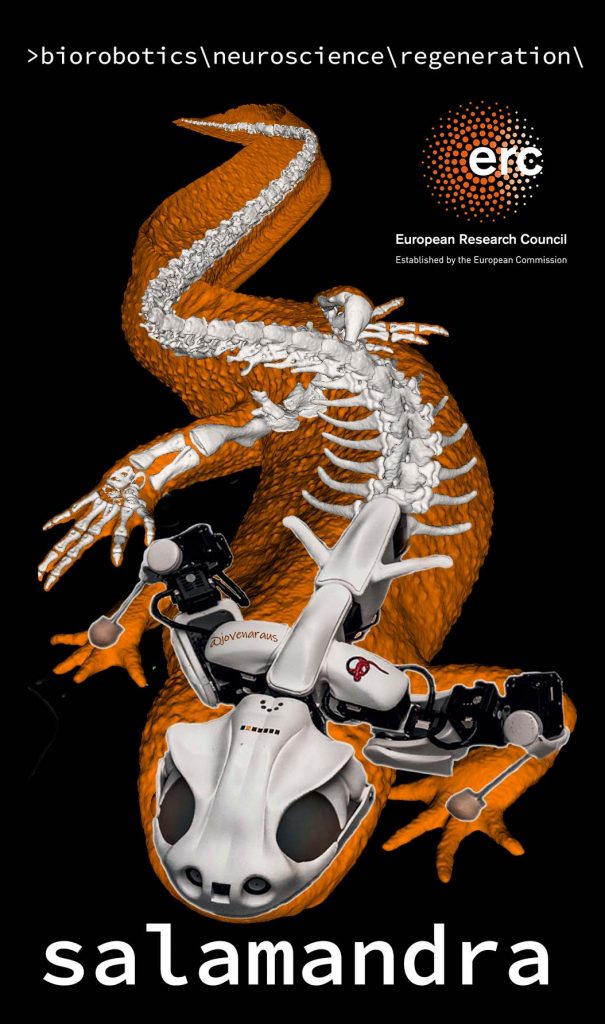The goals of this ERC Synergy Project are to decipher how the interplay between central and peripheral mechanisms controls locomotion in four legged animals (tetrapods) and to the delineate the reorganization of motor circuits linked to functional regeneration after spinal cord lesion. We will take advantage of the evolutionarily conserved traits of neural structures in vertebrates to address these two fundamental questions by using salamanders as model organisms. Salamanders are best suited to these aims for two main reasons: First, because they have an anatomically simplified nervous system, which yet possesses the main features of all tetrapods; second, because they have unique regeneration abilities among vertebrates and can functionally repair their spinal cord after full transection. Taking an interdisciplinary approach, we will investigate the dynamic interactions between the nervous system, the body, and its environment before and after spinal cord lesion. We will combine numerical models of locomotor neural circuits, robotics, and advanced functional analyses in genetically modified salamanders in a way that will allow us to test biological data in neuromechanical models (simulations and robots) and, conversely, to validate model-based predictions in animals. Through the concerted and tightly collaborative activities in our laboratories, implementing state of the art assays ranging from the molecular to the organism level, we expect to create a blueprint of tetrapod locomotion control: how appropriate movements are generated in response to various environmental or intrinsic stimuli, and how such function can be recovered after injury. The synergy between our groups of complementary expertise will boost scientific research at multiple levels, not only in the field of neuroscience but also in regeneration research, robotics, and numerical modeling.
For more information and the latest news, check the Official Salamandra Project Website
